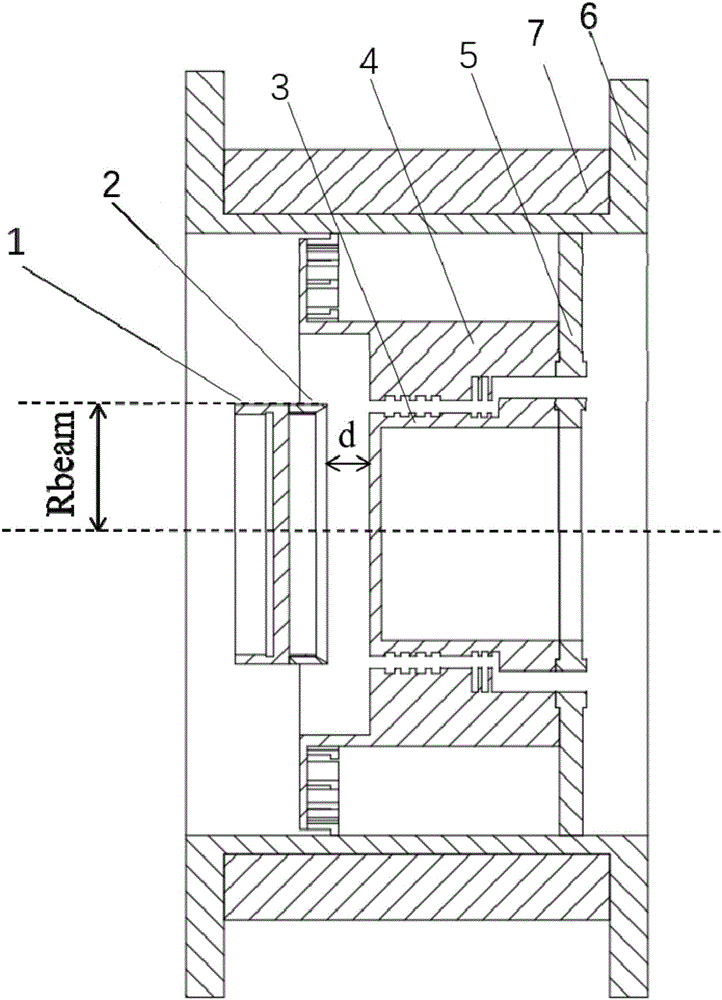Millimeter waveband transition time oscillator based on high order mode working mechanism
A millimeter wave band, transit time technology, applied in the direction of electron tubes and klystrons with velocity/density modulation electron flow, can solve the problems of strong surface field, breakdown, power capacity limitation of devices, etc., to achieve large working capacity, The effect of strong modulation ability and large radial size
- Summary
- Abstract
- Description
- Claims
- Application Information
AI Technical Summary
Problems solved by technology
Method used
Image
Examples
specific Embodiment approach
[0028] DETAILED DESCRIPTION OF THE PREFERRED EMBODIMENTS The present invention will be further described below in conjunction with the accompanying drawings.
[0029] figure 1 It is a structural schematic diagram of the L-band transit time oscillator disclosed in prior art 1. The structure is composed of a cathode a, an outer conductor b, and an inner conductor c, and the whole structure is rotationally symmetrical about the central axis. The radius of the center of the right end of cathode a is r beam . Both the outer conductor b and the inner conductor c have four grooves, the axial position and size of the grooves of the inner and outer conductors are the same, and the maximum radius r at the groove of the outer conductor 1 , the minimum radius r at the groove of the outer conductor 2 , the maximum radius r at the groove of the inner conductor 3 , the minimum radius r at the groove of the outer conductor 4 , the radial dimension satisfies r 1 >r 2 >r beam >r 3 >r ...
PUM
 Login to View More
Login to View More Abstract
Description
Claims
Application Information
 Login to View More
Login to View More - R&D
- Intellectual Property
- Life Sciences
- Materials
- Tech Scout
- Unparalleled Data Quality
- Higher Quality Content
- 60% Fewer Hallucinations
Browse by: Latest US Patents, China's latest patents, Technical Efficacy Thesaurus, Application Domain, Technology Topic, Popular Technical Reports.
© 2025 PatSnap. All rights reserved.Legal|Privacy policy|Modern Slavery Act Transparency Statement|Sitemap|About US| Contact US: help@patsnap.com



